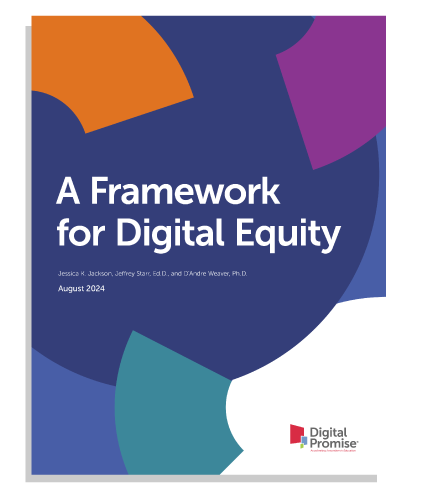Digital Promise’s Digital Equity Framework is a set of principles, guidelines, and policy recommendations designed to bridge the digital divides at the state level, for K-12 systems, and for higher education.
The K-12 Digital Equity Framework is a systematic way for leaders, teachers, and coaches to advance digital equity by closing the digital teaching and learning gap in schools. It is composed of five interdependent components, or domains.
The State Digital Equity and Opportunity Framework sets the enabling conditions for equitable access, use, and workforce readiness for all people in an increasingly digital society.
The Higher Education Framework is a set of principles and guidelines designed to guide people studying, teaching, and/or leading within postsecondary institutions in the development or redevelopment of systems, policies, and curricula to address digital skills, knowledge, and infrastructure gaps.
Inclusive Innovation
A belief in collaboration with those most impacted, underserved, and underrepresented, grounded in the ideals of targeted universalism, and centered on the voices of those historically and systematically excluded.
Learn more from Digital Promise’s Center for Inclusive Innovation.
Sustainability
A belief that these efforts are mission-critical and society-building, requiring thoughtful planning for the long term to ensure enduring impact.
Continuous Improvement
A commitment to never being satisfied and always striving for more equitable outcomes efficiently and effectively.
 Dive deeper into the context behind the Digital Equity Framework in our white paper, A Framework for Digital Equity. The publication explains why we believe it’s past time for us to look at digital equity differently than we have before, and why we need new frameworks to achieve it.
Dive deeper into the context behind the Digital Equity Framework in our white paper, A Framework for Digital Equity. The publication explains why we believe it’s past time for us to look at digital equity differently than we have before, and why we need new frameworks to achieve it.